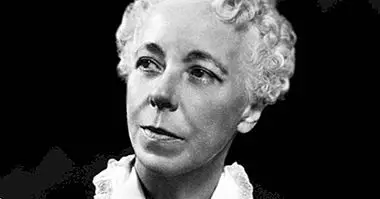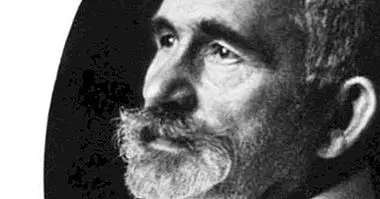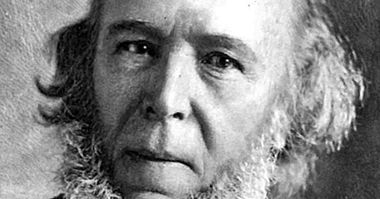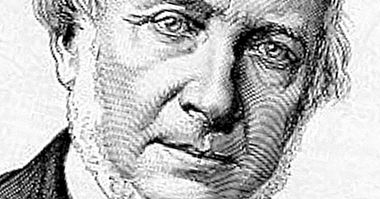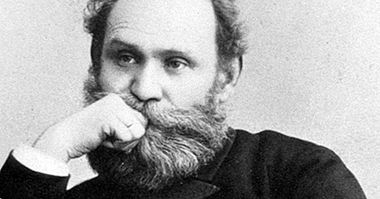Theodore Millon: biography and theoretical legacy of this psychologist
Theodore Millon's theory of personality disorders has been one of the most influential models in this field of psychology.
In this article we will review the biography and the work of Theodore Millon and we will describe the 12 types of personality disorder that exist according to this author, whose influence in the diagnostic manuals has been very important.
- Related article: "History of Psychology: authors and main theories"
Biography of Theodore Millon
Theodore Millon is an American psychologist whose work has played an extremely significant role in the development of the psychological conception of personality disorders . In particular, Millon was a highly valued member of the American Psychological Association and his theory has had a key influence on DSM manuals.
Millon was born in 1928 in Manhattan, the most important district of the city of New York. His parents were Jewish emigrants who had been born in Lithuania and in Poland, respectively. After studying psychology, philosophy and physics at various universities in the United States and Europe, Millon received his doctorate from the University of Connecticut in 1950.
During his life Millon published more than 30 books of his own, in addition to participating in a large number of articles and book chapters and founding the magazine Journal of Personality Disorders. He was also named professor emeritus at the universities of Harvard and Miami. He died on January 29, 2014 while sleeping due to congestive heart failure.
One of the main contributions of Millon is its Multiaxial Clinical Inventories (MCMI), designed for the evaluation of the psychopathological personality. The test model developed by this author has been applied to both normal and clinical populations, with a special emphasis on the latter, as well as groups of people of different ages.
Theory and personality disorders according to Millon
For Theodore Millon personality disorders they should not be understood as mental illness but as styles of behavior, cognition and emotion that imply inflexibility (which limits the acquisition of new behaviors) and difficulties to handle stressful situations, besides promoting "vicious circles" of functioning.
Millon's theory of personality disorders describes 14 maladaptive patterns that differ fundamentally in terms of the severity of the alterations and the type and source of the reinforcement that guides the behavior. Each of the disorders would develop because of specific combinations of biological and environmental factors.
- Maybe you're interested: "The main theories of personality"
1. Paranoid
Millon considers that the paranoid disorder is one of the most serious, along with the limit and the schizotypal . This is due to the fact that it attributes structural deficits, that is to say, it defines as the main characteristic of the severe alterations of the personality the inconsistent, cohesive, solid and functionally effective organization of the personality traits.
The paranoid disorder is characterized by distrust, suspicion and hostility towards others and by the appearance of anger reactions in situations in which contempt or humiliation is perceived. Millon defines three variants: paranoid-narcissistic, paranoid-antisocial and paranoid-compulsive.
2. Schizotypal
The schizotypal personality is defined by social isolation, emotional deficits, self-centered cognitive style and extravagant behaviors. According to Millon is associated with the lack of early stimulation, as well as possible biological dysfunctions in brain structures such as the limbic system and the ascending reticular activating system.
- Related article: "Schizotypal Personality Disorder: Symptoms, Causes and Treatment"
3. Limit
The borderline personality disorder implies a marked conflict between the needs of dependence and those of independence. They look themselves alterations in the sense of identity, erratic behaviors, emotional instability and a marked impulsiveness, which favors behaviors such as the abusive consumption of substances and self-harm.
- Maybe you're interested: "Personality Disorder (BPD): Causes, Symptoms and Treatment"
4. Passive-aggressive or negativist
The passive-aggressive personality is one of the most specific of the Millon proposal, and is not collected by most diagnostic manuals. In this case opposition tendencies predominate, which often interfere with other people's activities, complaints, pessimism, bad mood and lack of complacency towards others .
5. Obsessive-compulsive
The obsessive-compulsive personality, or simply compulsive, is characterized by the rigid and excessive adherence to standards, as well as fear of making mistakes although they may seem insignificant to other people. This lack of flexibility leads very often to difficulties in making decisions and to the lack of efficiency in carrying out tasks.
6. Evolutionary
In people with avoidant personality disorder, there are feelings of loneliness and fear of interpersonal rejection, often related to self-esteem deficits; this causes hypersensitivity to the possibility of being ridiculed and therefore a tendency to isolation.
7. Schizoid
Like personality disorder by avoidance, the schizoid would be associated mainly with interpersonal detachment. However, in this case the reluctance to establish relationships is due to emotional coldness , the lack of interest in other people and the predominance of fantasy and solitary activities.
8. Histrionic
In the histrionic disorder they present dramatic, immature, manipulative and seductive interpersonal behaviors , which leads to dysfunctional relationships. The lack of stability in emotions is also common.
9. Dependent
Dependent personalities are characterized by feelings of inferiority and lack of self-confidence, the need to get help and reaffirmation from other people and the transfer of one's responsibilities to others. These people often feel helpless and insecure if they are alone.
10. Narcissistic
The narcissistic personality disorder Its fundamental characteristic is the overvaluation of one's own personal worth . Narcissistic people expect people with whom they interact to confirm their expectations of admiration and obtain special treatment, and are much more interested in themselves than in others.
- Maybe you're interested: "The 3 differences between narcissism and egocentrism"
11. Antisocial
According to Millon, and far from the typical definitions that associate this disorder with criminal behaviors as a key aspect, antisocial personalities are characterized by ambition, persistence and the direction of behavior towards specific objectives. It is also given distrust in the capacity of others and need to control the environment .
12. Sadistic or aggressive
The sadistic personalities they get reinforcement through the provocation of suffering or discomfort (including manipulation, cruelty, aggression and fear) to other people or to oneself. Along with the negativist disorder, the masochist and the depressive, it is one of the most representative of Millon's contributions.
13. Masochist
For Millon, the concept of masochism refers to a pattern of counterproductive behavior that leads to involvement with unpromising people and activities, excessive personal sacrifice, failure in affordable tasks and rejection of opportunities to obtain reinforcement or to react positively to these.
14. Depressive
In these types of personalities they predominate depressive symptoms such as sadness, low self-esteem, pessimism or the tendency to worry and feelings of guilt. There are conceptual problems in relation to this disorder because of its similarity to dysthymia, chronic depression and personality disorder by avoidance.


